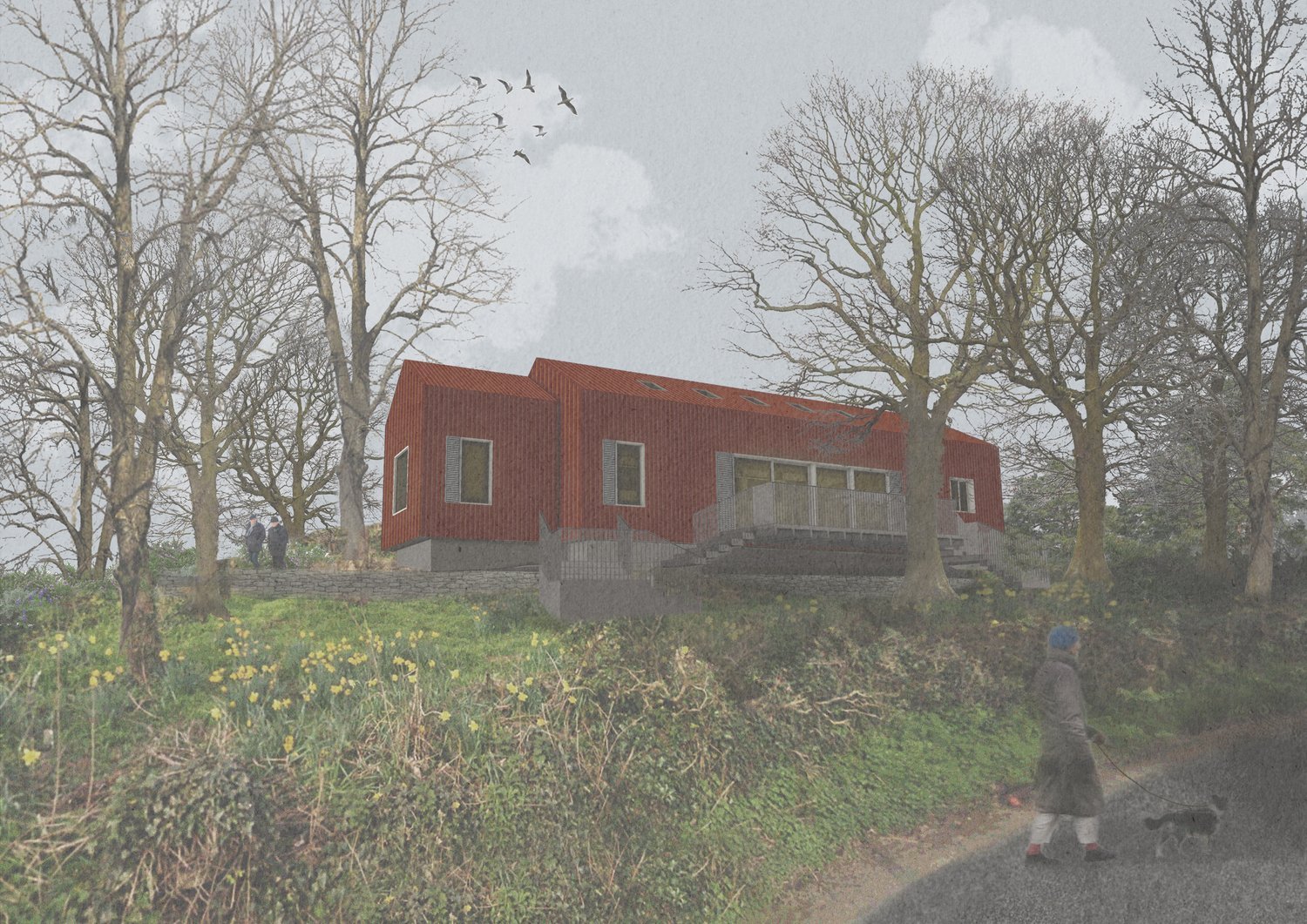
to serve
We offer a direct response to one of the biggest challenges of our time - the changing climate. At every stage of the RIBA work process, we take a regenerative approach, considering the positive impact a place can have both locally and globally—from strategic definition and design, through to technical specification, construction, and occupation.

A village hall - visualisation with @ninajonesstudio

Upcycle Kernow - visualisation by Lane Architects

Ghostly image of Penryn Methodist Church

Village hall-minimal interventions to make it energy efficient

The Auditory Plan - Penryn Methodist Church

Stoke Climsland Old School 1850s: from the collections at Kresen Kernow (Archive number SRP/69
ADAPTIVE REUSE: heritage and conservation
We look to conserve distinct characteristics while adapting each building to make it more suited for, and mindful of the environment it contributes to now and in the future. When looking to creatively reuse heritage building, we explore options for conservation by employing traditional as well as more radical ideas such as re-wilding, ‘adaptive release’ and ‘curated decay’ to retain a buildings cultural significance while regenerating it to play a positive role for future generations.
Retrofit
Retrofit adopts a 'fabric-first' approach to enhance the energy efficiency of existing buildings, making them more comfortable and healthier for both us and future generations. Retrofit looks at the best way to stop precious heat from escaping in the winter, prevent overheating in the summer, reduce the amount of embodied and in-use carbon produced and save money over the long-term.
For many of us rising energy costs are making it hard to keep our homes and work places warm enough to be comfortable and healthy. Added to this, there’s the pressing climate challenge and the need to reduce carbon production to net zero by 2050. Improving the energy efficiency of our buildings can help on both fronts. That’s where retrofitting comes in.
Whole House Retrofit
Keep your building in good repair
Improve the insulation of your walls, floors and roof, by using natural, ‘bio-based’ materials
Renovate or replace your windows
Improve the airtightness to reduce drafts and uncontrolled air moving through the building
Control ventilation to stop condensation and mould growth and maintain a healthy internal environment
Reduce the amount of water you use
Reduce waste by retaining, repairing and reusing as much of the existing fabric as possible
Replace your fossil fuel boiler with a heat pump to run on electricity from a decarbonised grid
Offset your energy use by producing your own electricity with Solar PV and your own hot water through solar thermal
Every place, whether rural or urban, has the potential to support a more resilient ecology that benefits all species, blurring the line between built and natural environments. By fostering this interconnectedness, we design for disassembly, recycle waste, and return energy to usable forms. With a ‘fabric-first’ approach and a focus on bio-based materials, we combine emergent thinking with trusted conservation techniques -innovation with tradition- to realise what’s truly possible in a regenerative development for long-term interspecies justice.
REGENERATIVE DEVELOPMENT

BEST PRACTICE
From the Society for the Protection of Ancient Building’s conservative repair, to the retrofit principles established by both the Low Energy Transformation Initiative (LETI) and the Association of Environment Conscious Building (AECB), to the Sustainable Traditional Buildings Alliance’s responsible retrofit knowledge centre – we draw on extensive resources, research and experience across the sector to tackle every project.
Crow Architecture are committed to the actions set out in the Architects Declare manifesto and to the #ENDGASNOW campaign. The practice is focussed on meeting the goals of the Royal Institute of British Architects’ (RIBA) 2030 Climate Challenge and draws inspiration from the Architects Climate Action Network (ACAN)
The Royal Institute of British Architects’ (RIBA) 2030 Climate Challenge and the UK’s 2050 net zero targets are highly ambitious. By working together we can address this challenge.

FEES
As every project is different, we have no set or standard architect fees. We’ll work together to understand the cost of your project based on what you need.
Once we have a clear idea of the help you need, a defined project brief and construction budget, we can agree a fee for our involvement. We can also work with you to define target construction costs.
Visit the RIBA website for a description of how architects calculate their fees.



